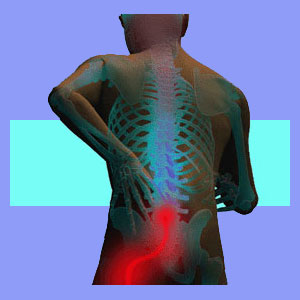
Leg weakness is a disturbing sciatica symptom which makes many sufferers fearful of falling down. Weakness in the legs is also a great deterrent to physical activity, forcing most chronic sufferers into a sedentary lifestyle devoid of exercise or even normal movement. Weakness can describe an actual or perceived lack of life energy and muscular strength in one or both legs.
Bilateral sciatica may create weak legs on both sides, while unilateral sciatica will only affect one leg. Weakness in the lower body is one of the most common symptomatic expressions for sciatica nerve pain and sometimes occurs along with tingling and/or numbness. Usually, it is the last symptomatic expression to show itself, after prolonged periods of paresthesia and numbness.
This article will examine the incidence and relevance of muscular weakness in the legs. We will investigate where and why symptoms occur and how they can be diagnosed successfully.
Leg Weakness Symptoms
Weakness is most common in the upper legs, with patients possibly complaining that the rear or front of the thigh feels weak. Some patients feel weakness primarily around the knee joint, while others suffer it in the side of the calf or ankle.
Sciatica weakness can be objective or subjective. Objective weakness in the legs will be diagnosed through muscular and neurological testing. Subjective weakness will make the legs feel less capable to the sufferer, but the muscles will check out fine during diagnostic testing. Either type of weakness is able to be generated from both spinal and non-spinal causes of sciatica.
Spinal sources of sciatica include herniated discs, osteophytes, abnormal spinal curvatures and spondylolisthesis, while non-spinal causes include sacroiliac joint conditions, piriformis syndrome, localized sciatic nerve injury, muscular imbalances, diseases, diabetes and regional ischemia.
Achieving an accurate sciatica diagnosis can be challenging and misdiagnosis is the prevalent reason why so many patients never enjoy lasting cures.
Therapy for Weak Legs
If a spinal source is positively identified as the underlying reason for the weakness, then the symptoms should go away once that issue has been successfully treated. Remember that most herniated discs and spinal osteoarthritis conditions are not the real reasons for back and leg pain, nor the associated neurological symptoms. This is precisely why treatments for these issues generally fail, sometimes miserably.
Spinal abnormalities should never be assumed to be the causative process for pain. Instead, they should be studied in detail in order to ascertain whether nerve interaction is definitively occurring or not.
Weak legs due to oxygen deprivation of the sciatic nerve or the local muscle and nerve tissue can be caused by circulatory issues, disease, inflammation or a mindbody causation. Psychosomatic versions of ischemia can usually be treated with knowledge therapy, while anatomical sources must be addressed medically.
Soft tissue pathologies, such as localized injury and muscular imbalances, should be treated by a physical therapist, while sciatic nerve syndromes should always be diagnosed and treated by a specialist in spinal neurology.
Leg Weakness Conclusions
Weakness can be a sign of a significant medical emergency, but this is luckily rare. Most cases of weakness are subjective or mildly objective and are enacted by regional ischemia or the physical effects of a significant spinal abnormality. Both of these possibilities can be relatively easy to resolve, given a correct diagnosis and appropriate sciatica treatment being applied.
If you have not been able to shake off recurrent or chronic weakness in your back, legs or feet, I urge you to reconsider your diagnosis, since this is the facet of care which is mostly responsible for poor curative results. Just remember that weakness can be a direct result of repressed emotional issues, just the same as it can be the result of a spinal concern.
If the obvious structurally-targeted treatments turn out to be useless in your quest for relief, then you might want to learn more about the enlightened alternatives. Remember, surgery and drugs are rarely good solutions for any type of dorsalgia complaint.





